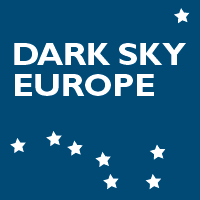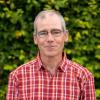We are looking for collaborators for a project concerning light pollution in the Fehmarn belt, South Denmark and Schleswig-Holstein regions.
The project will involve children, young people and adults, and will inspire them to see the darkness of night as something positive, and at the same time help with mapping light pollution in their surroundings.
The participants will learn about the importance of night darkness for nature and human health, and for biodiversity.
The mapping of measurements of light pollution will result in concrete proposals to reduce light pollution, and an exact division of areas that can be classified into degrees of light pollution.
The German participants will be invited on a tour of the Dark Sky park on Møn, meeting the Daish participants, to give them an idea of what the sky looks like with minimal light pollution, receive training in measurement methods, lending light meters, and learn how to find sources of light pollution.
Danish participants will be invited on a tour to North Germany, to meet again with the german participants, and work with them to analyse the experiences and results they have gathered.
The third and final meeting will be on Møn, where all the participants will exchange gathered measurements, experiences and documentation.
During all three meetings, participants will interview each other, recorded with video cameras. They will answer questions about their feelings towards darkness, and what they experience when they are in a dark, natural environment at night.
Part of the project will be for the contributors to identify e.g. businesses with redundant lighting at night, and the project organisers and participants will try to meet with owners and come up with suggestions on how they can reduce their light pollution.
The participants will evaluate improvements and issue certificates/diplomas to companies and individuals who, during the project's duration, have changed their lighting to be gentler on the night darkness.
The basic purpose of the project is to inspire the participants to look at night darkness as something positive that should not be fought against by using excessive lighting.
Darkness is a negatively charged word, and light is seen as positive.
Since industrialisation began, artificial lighting has been constantly increasing by an average of 10% yearly. This has resulted in very few places in Denmark and North Germany where people can enjoy the sight of an undisturbed night sky. Light pollution does not respect borders, so a regional effort is necessary for any effect.
It has also meant that knowledge of the sky, planets and stars has decreased, and that older people know more about the night sky than young people do today.
As there is no legislation to limit light pollution, it is important to spread awareness of the problem so that more people learn to appreciate the darkness of night.
In this way, the participants can have a positive influence on their surroundings in a way that is relatively easy to do something about.
In the project group, we will try to help the participants have a good experience, by being able to influence the conditions around them. It can be very difficult for children and young people to feel that they have any influence on the rest of the world, but they can learn that in some cases they can achieve results by factually explaining about a problem that people have not been aware of. It can, for example, be better shielding of light, or connection of motion sensors to turn on and off outdoor lighting. Or, in many cases, completely turning off unnecessary lighting at night.
The Danish initiators have been working on the subject for several years, e.g. through the initiative "Dark Sky Park Møn & Nyord", and helping other areas in Denmark that are seeking certification as Dark Sky parks.
There is no legislation about light pollution, although there is plenty of documentation about how negatively it affects animals, people and ecosystems.
https://darkskydenmark.dk/en/lightpollution
The continued increase of light pollution levels can only be changed by citizen involvement and attention to the problem, and cooperation between countries, municipalities, businesses and citizens. It has partially succeeded on Møn, through a very large effort. We think it will be exciting to see if it can be done in a different way, on a larger scale, and the experience we can gain with this project will be very interesting for other parts of Europe.
The target group is children and young people and their families.
Participants are recruited by mention in newspaper articles, on YouTube, Instagram/Facebook, websites dealing with light pollution, and on the project's website.
We will contact nature science teachers to see if they are interested in participating, and finding interested participants among their students.
As video/photos/audio from the participants will be published on an ongoing basis, it is possible that more registered participants and partners will be added on an ongoing basis.
It is not a problem for the implementation of the project if not everyone is registered from the start.
Introductions can be regularly held for groups of new registrants.
It is intended that, throughout the life of the project, more collaboration partners will be found in other municipalities. It takes time to find the right partners, but it is hopefully easier when the project is underway and awareness of it increases.
Meetings and activities
Collaborating organisations meet
Adult project leaders and participant organisations will meet to plan the project timeline, discuss activities and practical matters. This can be at any of the project partners location, depending on what is most practical.
German and Danish participants meet on Møn
Tour of the Dark Sky park on Møn, introduction to astronomy and nighttime wildlife
Training in light pollution measurement, using SQM devices, and visual estimation of sky quality
Participants will receive a citizen science kit, including star maps, apps for their phones, and SQM devices. Some of the items will have to be shared among groups of participants, due to budget constraints.
Training in identification of important light pollution sources
Interviews of all participants, in which they express their feelings about darkness.
German and Danish participants meet in Germany
Participants meet again, to discuss the experiences and results they have gathered.
Interviews of all participants, in which they express their feelings about darkness. Has anything changed?
Discussions of what can be done about the sources of light pollution that have been identified.
We will write letters, including documentation, to business owners and municipalities where we see a potentail for reduction in lighting.
German and Danish participants meet on Møn
All participants meet
Discussions, groups will tell about their experiences,
Interviews of all participants, in which they tell about their experiences.
We will watch a preliminary edit of all the gathered materials
Outcome
Video/photos/audio from the participants will be published on an ongoing basis, on social media platforms and on the project website.
All video, interviews, photos, drawings and sound recordings will be gathered together into a final video documentation.
A rough map of light pollution levels will be published, both on “Globe at Night” (https://globeatnight.org/) and on the project website.
The project will help gain insight in the viability of citizen science, and the results will be of interest in many other fields of research.
Young people in the region will get some experience in collaborating across the region, and will hopefully gain interest in science and environmental issues. There will be cultural exchange, and new friendships across the border.
Young people in the region will learn practical applications of STEAM (science, technology, engineering, art, mathematics) subjects outside of the classroom. They will gain new skills, taught in the highly informal learning environment of nature, while hopefully having fun with other participants.
Young people in the region will learn how they can initiate change, by gathering information and providing factual arguments.
Danish Project Team
Morten Pihl
Morten is the project manager in Denmark. He has been working extensively on the “Dark Sky Møn” project, measuring and documenting light pollution levels. He has also been working with people in other areas of Denmark, wishing to protect their night time darkness. He is working as a film school teacher, video producer, and astronomer. He is a Dark Sky guide on Møn, and arranges tours for school classes, families, businesses, government delegations and individuals.
Judith Breuning
Visual artist and trained teacher. Author of several teaching materials about film for the Danish Film Institute and publishers Alinea and Gyldendal. She has been a member of the selection committee at the Odense short film festival for several years. Judith is a co-founder of Filmfabrikken, a film school for children and young people in Vordingborg municipality, which she has been managing for ten years, and she is currently a consultant with the school. Judith has been the manager of several creative filmmaking projects involving young people from Denmark, Scandinavia and Germany.

